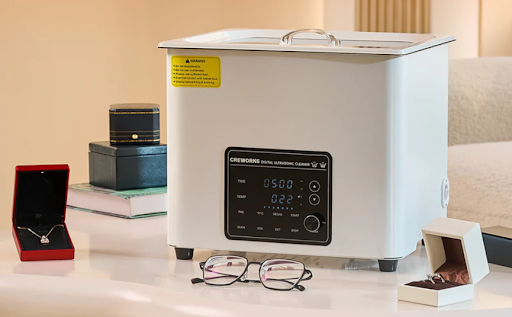Why Ultrasonic Cleaners Are Revolutionizing Industrial Cleaning

Industrial cleaning has always been a critical part of manufacturing, repair, and maintenance workflows. But as equipment and components grow increasingly complex—and cleanliness standards rise across industries—traditional cleaning methods are struggling to keep up. That’s where ultrasonic cleaners are making a big impact. Using high-frequency sound waves and advanced engineering, these machines are quietly transforming how industries achieve deep, efficient, and reliable cleaning.
What Makes Ultrasonic Cleaning Different?
Ultrasonic cleaning doesn’t rely on harsh scrubbing, abrasive materials, or chemical-heavy solvents. Instead, it uses high-frequency sound waves—usually between 20 kHz and 40 kHz—to create microscopic bubbles in a cleaning solution. When these bubbles collapse, they generate localized force that lifts away contaminants from surfaces.
What makes this process ideal for industrial use is its ability to clean thoroughly without damaging materials, even in the most intricate or delicate components. Compared to manual or pressure-based cleaning, ultrasonic systems offer unmatched consistency, speed, and reach—no more struggling to clean inside small cavities or complex assemblies.
Key Advantages in Industrial Applications
Precision Cleaning Without the Risk
An ultrasonic cleaner excels at removing grime, carbon deposits, metal shavings, oils, and other contaminants from hard-to-reach places—without scratching or degrading the material. This is especially crucial in industries where precision is non-negotiable.
Faster Turnaround Times
Because ultrasonic systems can clean multiple parts at once—and typically finish in minutes—they significantly speed up production and maintenance cycles. No more bottlenecks from hand-cleaning or soaking overnight.
Safe for a Wide Range of Materials
From stainless steel to plastic, glass, and even soft alloys, ultrasonic cleaning works across various materials. The non-invasive process makes it suitable for delicate instruments and rugged components alike.
Greener Cleaning Process
Many ultrasonic cleaning systems work with biodegradable or water-based solutions, drastically reducing the need for toxic chemicals. That’s not just better for the environment—it also improves workplace safety and reduces regulatory burdens.
Long-Term Cost Savings
With fewer chemicals, less labor, and reduced damage or rework, businesses often find ultrasonic systems pay for themselves quickly. Their durability and low operating costs make them a smart long-term investment.
Industries Benefiting from Ultrasonic Technology
Ultrasonic cleaners aren’t limited to one niche—they’re proving essential across multiple sectors:
- Manufacturing: Keeps precision tools, dies, and machined parts free of debris during and after production
- Automotive: Perfect for cleaning carburetors, fuel injectors, gears, and engine components without disassembly
- Medical & Dental: Ensures instruments are thoroughly cleaned before sterilization, especially in joints and hinges
- Electronics: Safely removes dust, flux, and residue from delicate circuit boards and contacts
- Aerospace & Defense: Maintains the cleanliness of highly sensitive instruments used in flight systems and weaponry
Innovations and Trends in Ultrasonic Cleaning Systems
As industrial demands evolve, so do ultrasonic systems. Newer machines now offer:
- Multi-frequency operation: Adaptable to different cleaning tasks or contamination levels
- Automated integration: Compatible with conveyor lines or robotic handling systems
- Real-time monitoring: Sensors and software allow for precise control of temperature, frequency, and time
- Eco-focused design: More energy-efficient and compatible with non-toxic, biodegradable solutions
These innovations make it easier than ever for manufacturers to incorporate ultrasonic cleaning into lean production workflows or sustainable facility plans.
Choosing the Right Ultrasonic Cleaner for Your Operation
Not all ultrasonic cleaners are built for heavy-duty or high-volume use, so it’s important to choose a model that fits your industrial needs. Key factors include tank size, power output, frequency range, and compatibility with cleaning solutions and materials.
For businesses seeking quality and reliability, Creworks Ultrasonic Cleaners offer an excellent balance of performance and affordability. Their industrial-grade units are built to handle tough jobs with precision and consistency, making them a smart investment for any professional cleaning workflow.
Conclusion
Ultrasonic cleaners are no longer just a niche tool—they’re becoming a staple in industrial cleaning thanks to their efficiency, precision, and eco-friendly advantages. Whether you’re streamlining a production line or maintaining mission-critical components, ultrasonic cleaning offers a smarter, more scalable solution. As industries demand cleaner parts, faster turnaround, and greener processes, ultrasonic technology is leading the charge.

